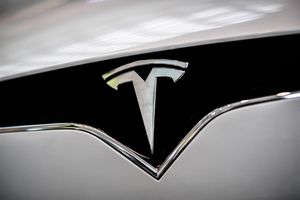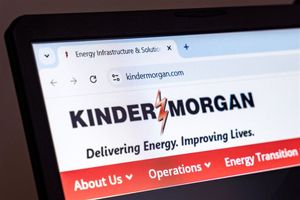The "End-to-End Autonomous Driving Research Report, 2025" report has been added to ResearchAndMarkets.com's offering.
End-to-End Autonomous Driving Research: E2E Evolution towards the VLA Paradigm via Synergy of Reinforcement Learning and World Models
The essence of end-to-end autonomous driving lies in mimicking driving behaviors through large-scale, high-quality human driving data. From a technical perspective, while imitation learning-based approaches can approach human-level driving performance, they struggle to transcend human cognitive limits. Additionally, the scarcity of high-quality scenario data and uneven data quality in driving datasets make it extremely challenging for end-to-end solutions to reach human-level capabilities. The high scalability threshold further complicates progress, as these systems typically require millions of high-quality driving clips for training.
Following the industry buzz around the DeepSeek-R1 model in early 2025, its innovative reinforcement learning (RL)-only technical path demonstrated unique advantages. This approach achieves cold startup with minimal high-quality data and employs a multi-stage RL training mechanism, effectively reducing dependency on data scale for large model training. This extension of the 'scaling laws' enables continuous model expansion. Innovations in RL can also be transferred to end-to-end autonomous driving, enhancing environmental perception, path planning, and decision-making with greater precision. This lays the foundation for building larger, more capable intelligent models.
Crucially, RL frameworks excel at autonomously generating reasoning chains in interactive environments, enabling large models to develop Chain-of-Thought (CoT) capabilities. This significantly improves logical reasoning efficiency and even unlocks potential beyond human cognitive constraints. By interacting with simulation environments generated by world models, end-to-end autonomous driving models gain deeper understanding of real-world physical rules. This RL-driven technical path offers a novel approach to algorithm development, promising to break traditional imitation learning limitations.
Transition of End-to-End Models towards the VLA Paradigm
End-to-end models directly map visual inputs to driving trajectory outputs via neural networks. However, lacking intrinsic understanding of physical world dynamics, these models operate without explicit semantic comprehension or logical reasoning. They fail to interpret verbal commands, traffic rules, or textual information. Furthermore, their limited 3D spatial perception restricts generalization in long-tail scenarios.
The Visual-Language-Action (VLA) paradigm introduces critical improvements by integrating Large Language Models (LLMs) into the architecture. This transforms the original single-modality vision-action system into a multimodal framework combining vision, language, and action. The inclusion of LLMs injects human-like common sense and logical reasoning into autonomous driving systems, transitioning from data-driven 'weak AI' to cognitive intelligence-driven 'generalist systems.'
The principle of reinforcement learning (RL) is to optimize action strategies through reward functions
The reinforcement learning model continuously interacts in the simulated traffic scene and relies on the reward mechanism to adjust and optimize the driving strategy. This way, the model can learn more reasonable decisions in the complex and dynamic traffic environment. However, reinforcement learning has obvious shortcomings in practical applications: on the one hand, the training efficiency is not high, and a lot of trial and error is required to obtain the usable model; on the other hand, it cannot be trained directly in the real road environment - after all, the real driving scene cannot afford frequent trial and error, and the cost is too high. Most of the current simulation training is based on the sensor data generated by the game engine, and the real environment relies on the information of the object itself rather than the sensor input, resulting in the gap between the simulation results and the actual scene.
Another problem is the human behavior alignment: the reinforcement learning exploration process may cause the model strategy to deviate from human driving habits and act incoherently. To address this, imitation learning is often integrated as a regularization term during RL training, incorporating human driving data to align policies with human behavior.
RL Training Mechanism:
The essence of the world model is a model based on neural networks, which can establish a correlation model between environmental states, action choices, and feedback rewards, and directly guide the behavioral decision-making of the agent. In intelligent driving scenarios, this model can generate optimal action strategies based on real-time environmental states. More importantly, it can build a virtual interactive environment close to real dynamics, providing a closed-loop training platform for reinforcement learning - the system continuously receives reward feedback in the simulation environment and continuously optimizes the strategy.
Through this mechanism, the two core capabilities of the end-to-end model are expected to be significantly improved: one is the perception ability, the recognition accuracy and understanding ability of environmental elements such as vehicles, pedestrians, obstacles, etc., and the other is the predictive ability, the predictive accuracy of other traffic participants' behavioral intentions. This whole chain optimization from perception to decision-making is the core value of empowering intelligent driving by the world model.
Key Topics Covered:
Technology Roadmap and Development Trends of E2E-AD
- Technology Trends of End-to-End Intelligent Driving
- Paradigm Revolution in Intelligent Driving ADS: 2024 Can be Considered as the First Year of E2E-AD (E2E-AD)
- Major Development Frameworks of AGI: Robot and Intelligent Driving will be the Two Mainstream E2E Application Scenarios
- Development Direction of E2E-AD Is to Achieve Humanized Driving
- Generative AI and E2E-AD Fused and Innovate, Scale of Data and Model Parameters Further Unleashes Potential of Basic Models
- E2E-AD Requires Higher Costs and Computing Power
- General World Model is One of the Best Implementation Paths for Intelligent Driving
- End-to-end Test Begins to Move from Open to Closed Loop
- Application Ideas and Implementation Pace of Foundation Model in E2E-AD
- Foundation Model
- Zero-shot Learning
- Market Trends of End-to-End Intelligent Driving
- Layout of Mainstream E2E System Solutions
- E2E System Enables Leading OEMs to Implement Map-free City NOA on a Large Scale
- Comparison 1 of NOA and End-to-end Implementation Schedules between Sub-brands of Domestic Mainstream OEMs
- End-to-end Intelligent Driving Team Building
- Impacts of End-to-end Foundation Models on Organizational Structure
- Leading People in End-to-end Intelligent Driving For Domestic OEMs and Suppliers
- E2E-AD Team Building of Domestic OEMs: XIAOMI
- End-to-end Intelligent Driving Team Building of Domestic OEMs
- E2E-AD Team Building of Domestic OEMs
- End-to-end Intelligent Driving Team Building of Domestic OEMs
End-to-end Intelligent Driving Suppliers
- MOMENTA
- DeepRoute.ai
- Huawei
- Horizon Robotics
- Zhuoyu Technology
- NVIDIA
- Bosch
- Baidu
- SenseAuto
- QCraft
- Wayve
- LINGO-2
- Waymo
- GigaAI
- LightWheel AI
- PhiGent Robotics
- Nullmax
- Mobileye
- Motovis
End-to-end Intelligent Driving Layout of OEMs
- Xpeng
- Li Auto
- Tesla
- Zeron
- Xiaomi Auto
- NIO
- Mercedes-Benz
- Chery
- GAC
- Leapmotor
- IM Motors
- Hongqi
For more information about this report visit https://www.researchandmarkets.com/r/mrte81
About ResearchAndMarkets.com
ResearchAndMarkets.com is the world's leading source for international market research reports and market data. We provide you with the latest data on international and regional markets, key industries, the top companies, new products and the latest trends.
View source version on businesswire.com: https://www.businesswire.com/news/home/20250721383105/en/
Contacts
ResearchAndMarkets.com
Laura Wood, Senior Press Manager
press@researchandmarkets.com
For E.S.T Office Hours Call 1-917-300-0470
For U.S./ CAN Toll Free Call 1-800-526-8630
For GMT Office Hours Call +353-1-416-8900






